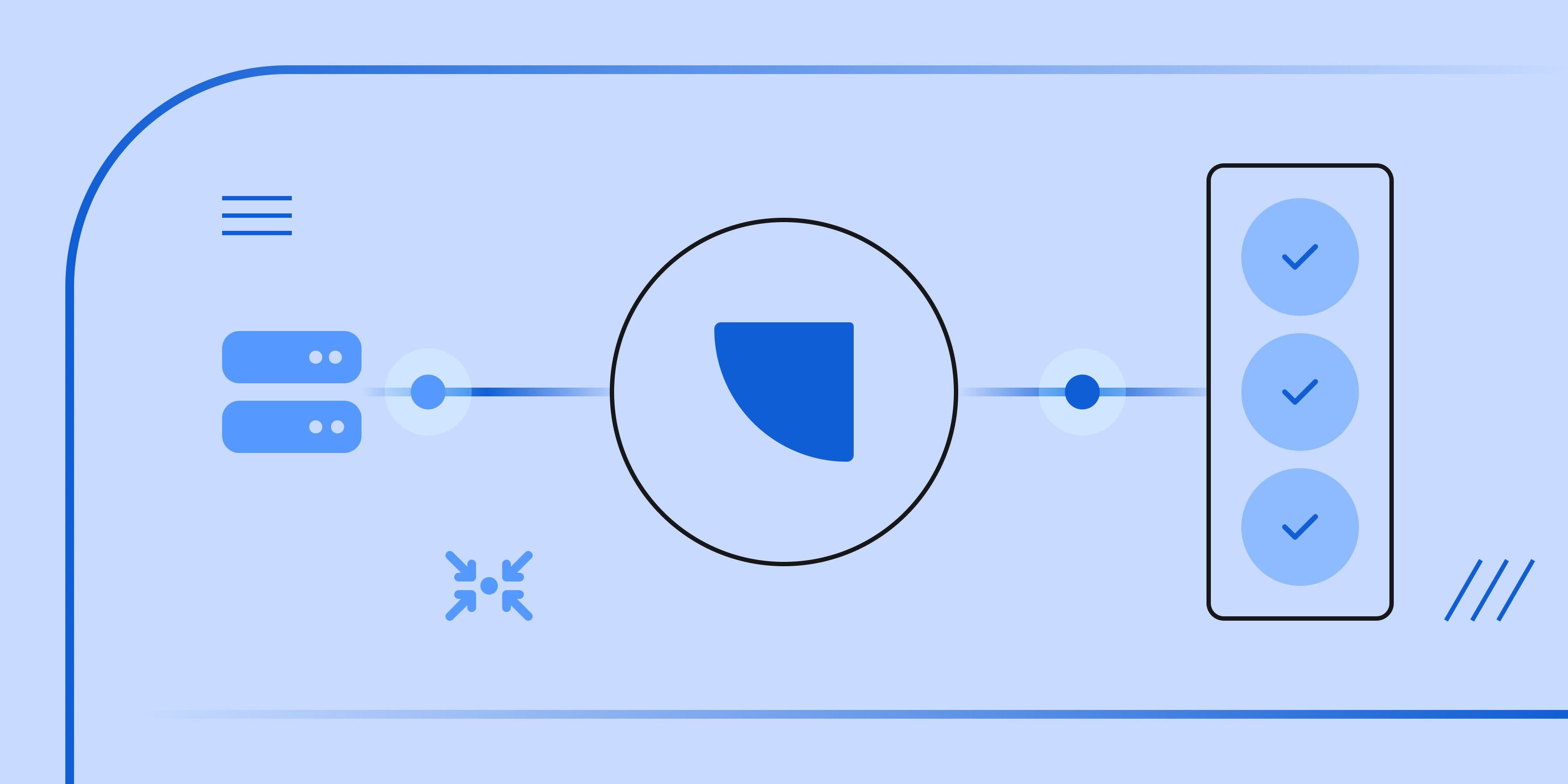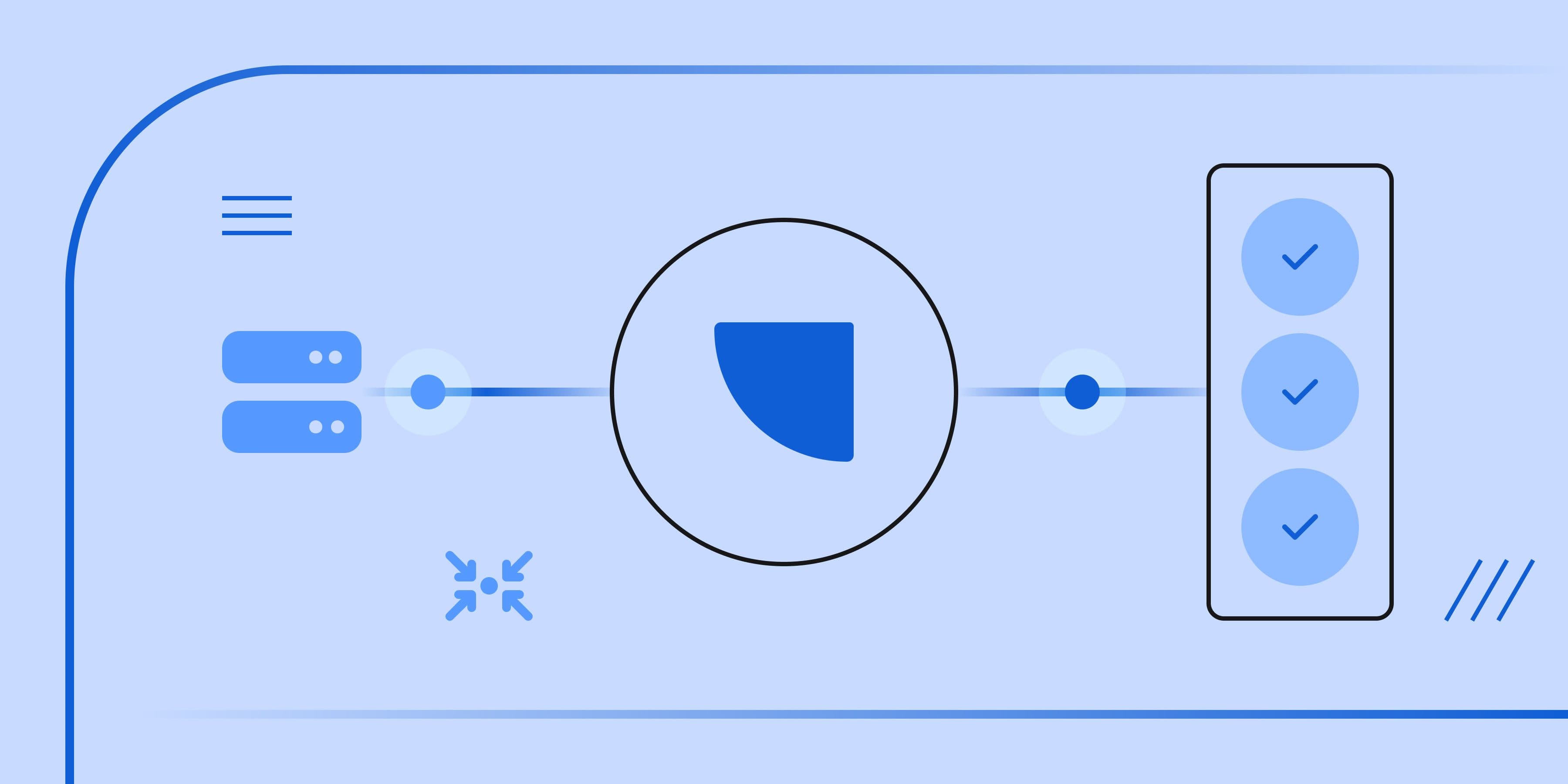What Is Data Movement? Definition and methods

Data movement simplifies the running of complex, business-critical data workflows. By integrating data and making it accessible across platforms and applications, data movement increases data reliability and useability, leading to greater operational efficiency as well as security and compliance.
However, data security threats, system compatibility issues, and the maintenance of data integrity can challenge the effectiveness of data movement.
In this article, we will define data movement, explain why it is necessary, and reveal the methods and best practices that can help businesses avoid these challenges.
What is data movement?
Data movement covers the transfer of data across an organization’s computer systems, networks, storage systems, databases, and applications.
From simple file operations to large-scale enterprise data integrations, the movement of data is essential. It keeps data integration, migration, and replication running smoothly and ensures that data is in the right place to be useful. Data movement also supports real-time decision-making by enabling and maintaining the steady flow of information.
Why you need to be moving your data
Data movement keeps data fit for purpose by preventing data stagnation.
Stagnant data degrades in quality over time as the context, standards, or environment in which it was collected change. This reduces data’s reliability and usefulness, which can result in poor strategic choices based on inaccurate or incomplete data. It can also lead to missed opportunities for innovation, improvement, or optimization and the loss of competitive advantages.
Stagnant data is also inefficient. Companies need to store, maintain, and back up any data they want to use. Low-quality data consumes these costly resources without delivering the corresponding benefits. Managing data can become challenging. Searching for and retrieving relevant information from out-of-date and stagnant databases becomes more complex than navigating well-maintained data repositories.
As storage media age, they also contribute to data degradation. SSDs have finite read and write cycles, while HDDs wear down even faster due to their mechanical nature. Companies still use both types of storage media due to their relative cheapness and high capacity, but when they wear out, data can be lost. To avoid this, businesses need to move their data to maintain backups and replace storage drives before they are likely to fail.
Finally, stagnant data increases the risks of security breaches and regulatory compliance issues. In certain locations and industries, organizations need to maintain accurate and up-to-date records. In these cases, outdated data can cause regulatory violations and fines or pose security risks if it contains sensitive information.
Data movement helps organizations avoid these pitfalls by keeping data up-to-date and in the right locations.
The main data movement methods
Each method of data movement serves a unique purpose. Businesses should consider their unique situation, such as data volume, data structure, or real-time requirements when choosing a method.
Data migration
Data migration moves data from one system or storage location to another. Businesses mostly use this method during system upgrades or when moving data from on-premises servers to cloud environments. Effective data migration requires thorough planning and testing to maintain data integrity and prevent data loss or corruption during the transfer process.
Data replication
Data replication provides high data availability by creating multiple copies of data across different systems. This method supports extensive data sharing and reduces network load in multi-site systems. Businesses commonly use data replication for backups, disaster recovery policies, data sharing across global teams, and managing high-availability environments, such as customer support systems.
Data synchronization (CDC)
Data synchronization ensures data consistency across systems by updating changes automatically. Also known as change data capture (CDC), it involves the capture and transfer of only updated source data.
Businesses might choose data synchronization for real-time analytics, multi-device updates, or applications like real-time inventories or financial dashboards that require instant data access.
ETL (Extract, transform, load)
Extract, transform, load, or ETL, involves extracting data from a source and transforming it to fit a target system's structure before loading it into that system. Relational data warehouses, which require rigorous schema and data quality, often use the ETL data movement method.
ETL also helps businesses maintain regulatory compliance and data privacy by applying transformation standards, such as data masking or anonymization before data reaches its storage destination.
ELT (Extract, load, transform)
Extract, load, transform, or ELT, uses the same steps as ETL, but performs them in a different order. In ELT, businesses extract data from the source, load it directly into the storage destination, and then transform it as needed.
ELT is a good choice for businesses that use data lakes as it can handle large, unstructured datasets. However, the complex transformations performed in the destination systems require extensive resources, which can make it a more challenging method for some businesses.
Reverse ETL
Reverse ETL transfers data from data warehouses back into software applications, for example, CRMs and analytics tools. Performing the ETL process from the data warehouse instead of to it enables real-time access to the data stored there.
Reverse ETL dissolves data silos and improves overall efficiency by providing teams with access to the data they need when they need it.
Data streaming
Data streaming refers to the real-time movement of data. This method continuously processes data, as if it were a stream.
Businesses use data streaming for real-time analytics or live-use cases, such as fraud detection in banking, IoT monitoring, or matching drivers and passengers in ride-sharing apps.
Data movement benefits
We’ve already explained that data movement is necessary to prevent data stagnation. However, moving data has wider benefits that become apparent across entire businesses.
Data accessibility and useability
When businesses replicate data across multiple locations, latency is reduced, system performance improves, and data is readily available to all teams. This is particularly important for global businesses, which often require rapid access to data across different regions.
Data replication and synchronization also aid in disaster recovery. Multiple copies of data allow companies to quickly restore data in the case of a hardware failure or natural disaster, enabling smooth and reliable business continuity.
By moving data into centralized data warehouses or data lakes, organizations can perform advanced analytics, such as predictive modeling and customer segmentation, extract real-time insights, and use data to improve key business decisions, such as marketing strategies, inventory management, and resource allocation.
Data integration and consistency
Organizations use data integration to combine data from various sources into a unified view. This holistic view of data allows for comprehensive data analysis and deeper business insights.
Furthermore, techniques like CDC and data streaming continuously monitor data. This leads to improved data consistency as teams can spot changes in the data during real-time updates. This leads to greater data integrity and useability across businesses.
Scalability and flexibility
As organizations grow, they need their data operations to scale with them. Many of the methods of moving data, especially ETL and ELT, are well-suited to handling large volumes of data and can help data teams prevent business discontinuity during growth phases.
In addition to adapting to increased data volumes, data movement strategies provide businesses with the flexibility to adapt to regulatory changes or shifting customer needs without interrupting daily operations. For instance, data movement methods can minimize downtime and preserve data integrity by allowing core business functions—like customer service, inventory management, or real-time analytics—to continue running during system upgrades or migrations to cloud environments.
Operational efficiency
Data movement strategies automate the process of data extraction, transformation, and loading. This reduces manual effort and minimizes errors. Automation also frees up data teams for other tasks, enhancing operational efficiency, streamlining business operations, and improving overall productivity.
Security and compliance
Data movement can include data transformation processes that anonymize or encrypt sensitive data, helping data teams ensure compliance with privacy regulations such as GDPR.
Furthermore, secure data movement processes protect data during transfers. This reduces the risk of data breaches and unauthorized access.
In summary, data movement offers numerous benefits that enhance data availability, consistency, and utilization. It also improves operational efficiency, scalability, and security. By adopting appropriate processes for the movement of data, organizations can ensure that their data assets are effectively leveraged for analysis, segmentation, and machine learning.
Data movement challenges
Despite its many benefits, data movement still presents some specific challenges. Organizations need to understand and address these challenges to ensure efficient, secure, and reliable data movement.
Performance, scalability, and resource allocation
Moving large volumes of data requires robust infrastructure to avoid straining network resources and impacting performance. Setting up and maintaining the hardware, software, and network infrastructure for data movement is costly and often requires technical expertise.
However, organizations need this infrastructure to minimize latency. Delays or downtime in critical, real-time applications negatively impact user experience and data or business operations. Businesses must ensure that they budget for the necessary infrastructure to move and manage their data.
Migration and transformation complexity
ETL processes involve complex transformations. It can be time-consuming and resource-intensive to ensure data fits the target system’s schema, but source and target systems compatibility is essential. Differences in formats, structures, and schemas complicate and slow down any data movement.
On the other hand, while ELT processes are more efficient for large datasets, they demand significant resources from the target system. This can potentially affect system performance.
Lastly, downtime or disruptions can occur if teams do not complete the necessary planning and testing before beginning data movement.
Data security, privacy, and governance
Integration from various sources is a key part of data movement, and organizational data silos need to be broken down for seamless data flow. It is important that the data origins, transformations, and destinations are tracked to avoid data lineage issues.
Data also becomes vulnerable during transfer. Businesses must implement robust encryption and security measures to protect sensitive information and comply with regulations like GDPR and HIPAA.
Monitoring and auditing
Continuous real-time monitoring is also necessary to detect and promptly resolve any issues with data. Businesses need to keep accurate and comprehensive records for compliance and security audit trails. However, setting up these systems for large data volumes is challenging, and continuous monitoring, troubleshooting, and maintenance also require significant operational overhead.
Choosing data movement tools: The key considerations
Do you need a data movement tool?
Whether you need a data movement tool depends on your organization's data management needs, infrastructure, and operational requirements.
Some of the key aspects to consider when deciding if you need a data movement tool are:
- The volume and variety of data you use: Data movement helps businesses effectively handle terabytes or petabytes of data from various sources, including data warehouses, cloud storage, and on-premise servers. A data movement tool will also streamline integration from different systems and maintain data consistency across platforms and applications for a unified view of data.
- The complexity of your workflow: Data movement simplifies and automates complex data workflows and enhances data quality through transformation, cleansing, and normalization. If your business needs real-time analytics and reporting for key business processes, a data movement tool can ensure your data is always up-to-date and in the right place.
- The data projects you have planned: If you have upcoming system upgrades or platform changes, such as a migration to a cloud environment, a data movement tool can ensure your data is moved smoothly and securely.
- The regulations your business needs to comply with: If your business is in an area covered by specific data laws, like GDPR and CCPA, or a sector like finance or healthcare, data movement tools can secure your data transfers and automate the creation of audit trails for compliance.
- The projected growth of your business: Organizations that are projected to grow soon will benefit from a data movement tool that can help them scale their data operations and reduce manual intervention.
How to choose a data movement tool
The next step is selecting the right data movement tool for your business needs. Here’s what to consider:
- Ensure your tool can handle the volumes and types of data your business uses now and in the future
- Check that the data movement tool is compatible with all your data sources, including databases, cloud storage, SaaS applications, and on-premises systems, as well as your target systems. The tool should also integrate seamlessly with your existing tech stack, including other data management and analytics tools.
- Consider if your use case requires real-time data integration or would be better served by moving data in scheduled batches.
- Ensure that the data movement tool will be able to handle any data transformations you require for data cleansing, enrichment, and normalization.
- Check the data security and compliance features that any data movement tool offers. Look for robust encryption, in transit and at rest, and features like data masking, anonymization, and audit trails.
- Consider the total cost of ownership and how it will fit into your budget. This includes licensing fees, infrastructure costs, and any additional costs for scaling and support. Decide if a subscription-based, usage-based, or one-time purchase model will be best for your business.
- Ensure that the vendor provides post-purchase support. This should be readily available and provide expert help. A strong user community and comprehensive documentation can also be invaluable for troubleshooting.
- Check the customization options provided by the data movement tool. Can you tailor the data movement processes if you need to? Look for extensible tools that allow you to add new features or integrate with custom applications. A user-friendly interface can also significantly reduce the learning curve for new tools and improve productivity.
- Consider the reviews of current users of any data movement tool. This can help you work out if performance and reliability promises will be met.
Fulfill your data movement needs with the RudderStack Warehouse Native CDP
RudderStack is a flexible and secure warehouse native CDP. Built from the ground up for data teams, the platform supports every stage of your data's journey to activation.
RudderStack does not store your data, but instead gives you full control and transparency over your customer data, allowing you to unlock its full value. Collect data from every source, unify data and automate identity resolution directly in your data warehouse or data lake, and deliver reliable, real-time data to your business tools.
Sign up for a free trial to experience RudderStack for yourself today.
Recent Posts
 Event Streaming: What It Is, How It Works, and Why You Should Use It
Event Streaming: What It Is, How It Works, and Why You Should Use It What is clickstream data? Definition, examples, and benefits
What is clickstream data? Definition, examples, and benefits What Is Data Movement? Definition and methods
What Is Data Movement? Definition and methods